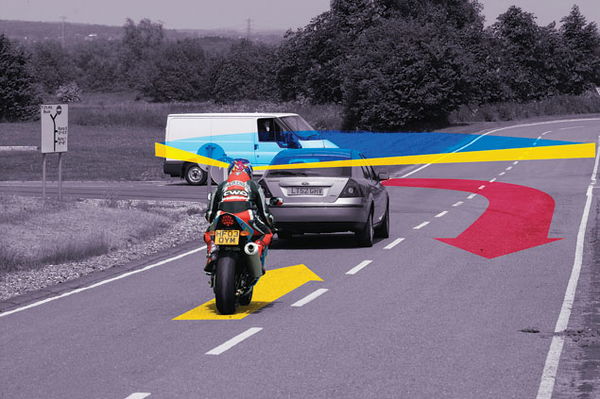Five tips to master slow riding
Because it's not all about going fast

IT'S true that riding fast takes a lot of skill (at least, riding fast and not killing yourself does…) But riding slowly is (almost) as hard. And it's one of the things that marks out a novice rider: wobbly, panicky, feet-out trundling at low speeds. Filtering through traffic, riding through a campsite, anywhere you need to go at walking pace or below, the top riders will always look far better at it.
The good news is it’s very easy to quickly get much better at it, and you can practice anywhere you like. Here's our tips on how to slow it all down.
1. Feet up
The first one isn't just about style. Having your feet waving about can set up an 'inverted pendulum' effect that creates instability. Your legs are actually pretty heavy, especially with a pair of Alpinestars on them, and if they're waving about uncontrollably, they can induce wobbles in your upper body and arms that will reduce your stability. Keep your feet on the pegs – and that brings another benefit, which is…
2. Back brake
…with your feet up, you have full access to the back brake and gear lever! Now, you should be in first already, so the gear lever isn't so vital. But the back brake is the key to slow-speed stability. Using the front stopper compresses the forks, moving the front up and down and reduces stability. But the back brake doesn’t do this at low speed, and having the 'drag' effect at the back of the bike is more stable than having a 'push' from the front of the bike. In addition, you can use the back brake to take up all the transmission slack in the drivetrain, which further smooths out your motion, and stops any jerky movement. To make the most of this, you also need to…
3. Slip clutch
…use your clutch! Slipping the clutch gives you another way to modulate your inputs to the bike's motion. Keep a steady throttle at low-ish revs, and use the clutch lever to feed the torque in and out to the back wheel. With the back brake on, you can 'balance' all three inputs – throttle, clutch and rear brake – to give a totally smooth torque force at the back tyre. Having the clutch on the bite point and the revs a little bit higher also prevents stalling, which often puts novices on their arse…
4. Look where you want to go
It's tempting to stare at the spot right in front of you when going slow, but this doesn't help. Make like a tight-rope walker, and keep your gaze up and ahead. You can take the odd peek down in case there's a mouse down there which you're going to run over. But just a quick peek.
5. Practice
Like playing the violin or making a cup of coffee, perfect slow-speed riding takes a lifetime to achieve. Speed the process up by practicing whenever you can. Every red traffic light, stop sign, traffic queue – remember the basics and practice going as slow as you can, for as long as you can. You could even spend a useful 15 mins a week in the work car park bashing away at it (do it when your colleagues are on a fag break).
Keeping your feet up once you stop is another balancing act which takes practice, and looks pretty cool too. Nothing beats hovering like a Jedi at a red light for 10 seconds, before smoothly powering away when the lights change…











